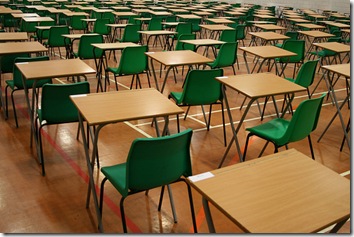
On Sunday, 8 January 2012 many lawyers, who are usually the ones to surprise the rest of the world, were in for a surprise. They were expecting a cakewalk through the Bar Exam, hoping to crack it with relative ease, and move out of the hall within two hours or so, as some of the candidates who attempted the prior editions of the Bar Exams had done. But that didn't happen this time.
The paper was much longer, and a significant number of candidates could not complete the exam, or completed it in a great hurry. There were quite a few candidates who could manage to attempt only 70 to 80 questions, and marked the remaining answers on a 'random' basis (as there was no negative marking).
There are still a few criticisms of the paper - one question (relating to circumstances when a decision of a foreign court would operate as res judicata) had multiple correct answers. There was a handout passed during the examination hall to correct certain 'errata', but that did not address this error. You would frequently hear suggestions related to the study material from every set of candidates who answer the Bar Exam, but they are not covered here.
Likely impact of the increased difficulty level of the third Bar Exam on pass rates
Pass rates for the current bar exam are likely to see a significant fall (at least 10 – 15 per cent). Failure rates for students who have appeared in Hindi and regional languages have been higher as compared to their English language counterparts. While the previous bar exam had a pass rate of 70 per cent, the 3rd All India Bar Exam is likely to see a pass percentage of around 60 per cent only.
Key differences from previous bar exams
1. The exam was much longer, due to longer and difficult questions, and a lot of students could not finish attempting all the questions. It was important to maintain focus and composure after completing 60 - 70 questions, which proved difficult as the questions required a candidate to read a lot, and the process of finding answers to questions which one did not know the answers to was tiring.
2. The exam had a lot of application-based questions, where you would have to apply use logic and common sense, without clear indications in the study material as to which of the options was correct. It appears that some of the problem based questions (Category B of the Part I and all the Part II questions) contained specific illustrations, derived from decided cases. Specific instances of such case law were not covered in the study material, though the general principle of law, from which the case law drew specific conclusions, was briefly explained in the material.
3. Certain questions drew analogies from illustrations mentioned in the study material, but were not directly taken from the illustrations.
4. The questions required candidates to browse back and forth through their study material to confirm their answers in the event of any doubt, which was a time-consuming process. While the first section (Part A) had questions from different parts of the same subject (in no particular order), the second section had questions from all of Book 2 (again, in no particular order), which was a tiring exercise. Candidates who were thorough with the material and / or had indexes to the materials would have definitely benefited.
On the whole, some students may be of the opinion that the bar exam is still much easier than the Common Law Admission Test (CLAT), but that is not an appropriate comparison. The CLAT is a competitive exam - only around 3 to 4 per cent of candidates qualify for admission in national law schools based on their CLAT scores. In any case, CLAT scores are lower than the Bar Exam.
The Bar Exam is simply a post-qualification test, and although it should be a difficult exam, if it is unfair if only 3 to 4 percent of the candidates are able to clear the Bar eventually. It might also encourage a culture of rote learning, or unnecessarily absorbing information without understanding it. After all, an examination can only test limited skills, and to make it extraordinarily difficult will not help in having better lawyers.
It seems that the rule that required a candidate to score 9 out of 23 questions correct has still not been made applicable (it was not mentioned on the instructions to the question paper), so a candidate may still be safe without having attempted any of the Part B questions, if he or she gets a score of above 40.
Full disclosure: BarHacker.in is jointly owned by iPleaders and Legally India.
threads most popular
thread most upvoted
comment newest
first oldest
first
The BCI and Rainmaker should take into account the fact that their preparatory material provided misleading instructions and recommendations that just dont work for this paper and assess the exam accordingly.
I think making the bar exam more challenging is an excellent idea. Considering that the examination is "with books" those students who know exactly where to look for the answers should benefit. The time pressure is an excellent idea.
I fail to understand why those who took the exam in languages other than english have fared worse, unless this is a reflection of the quality of pedagogy in such schools.
threads most popular
thread most upvoted
comment newest
first oldest
first